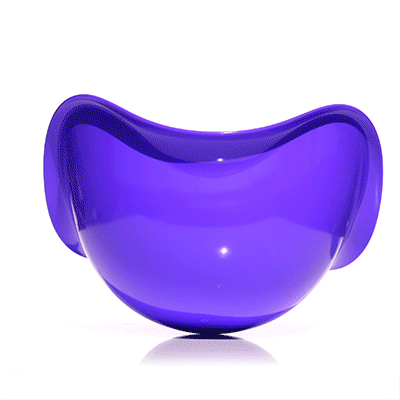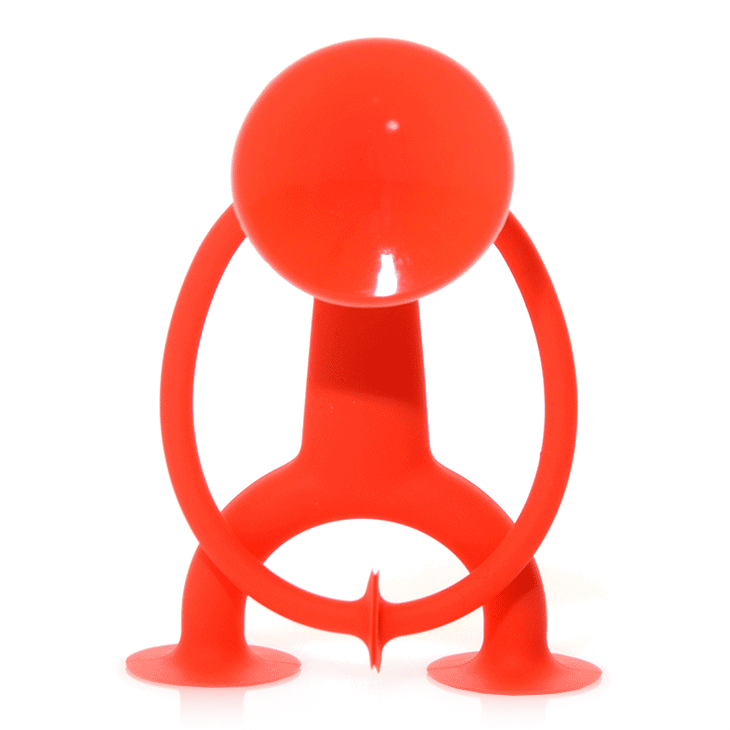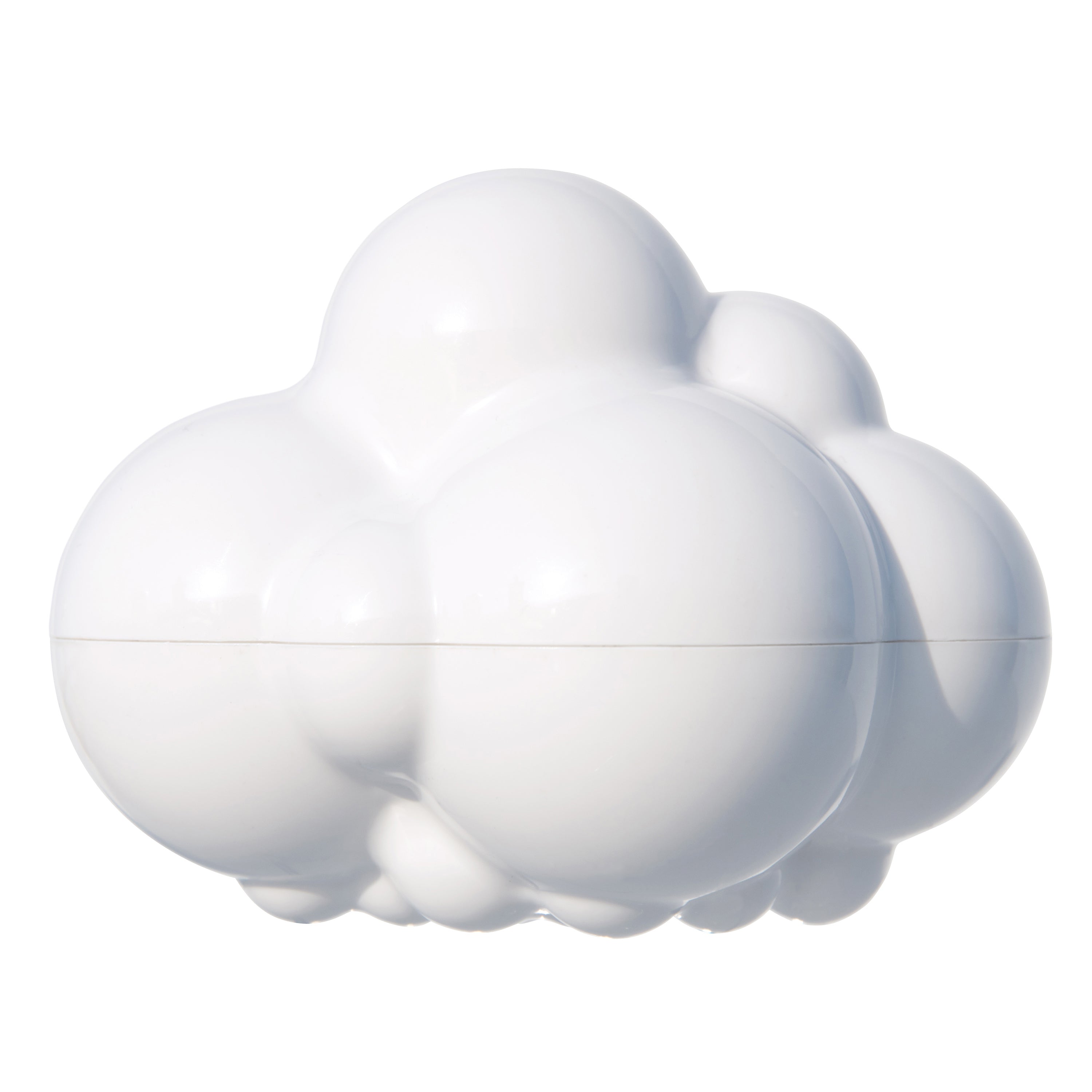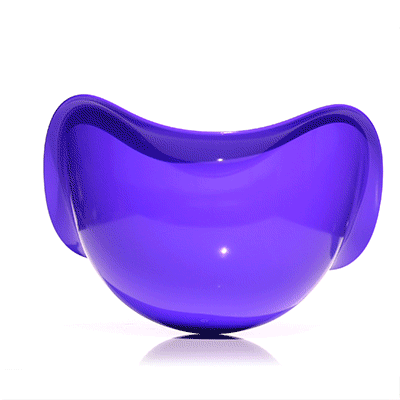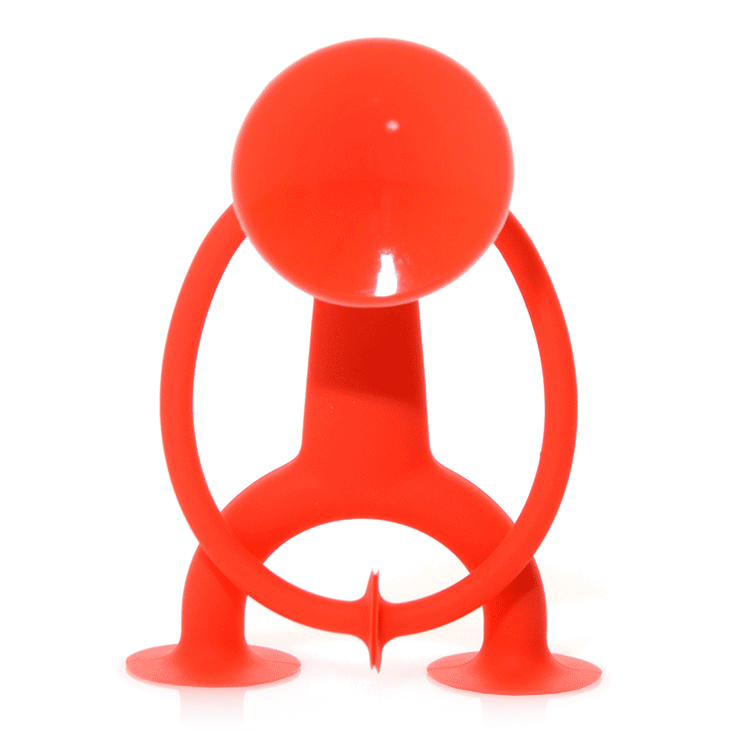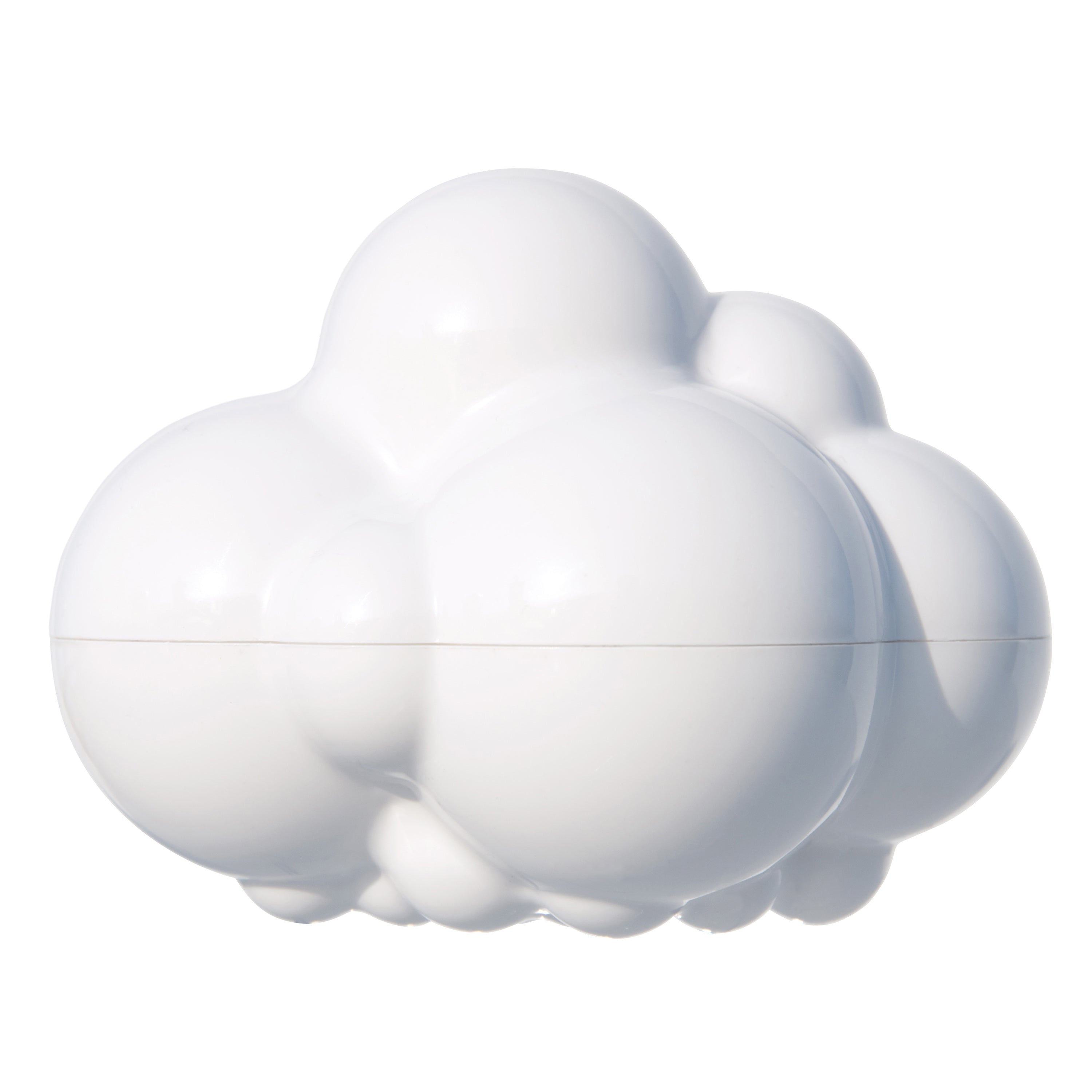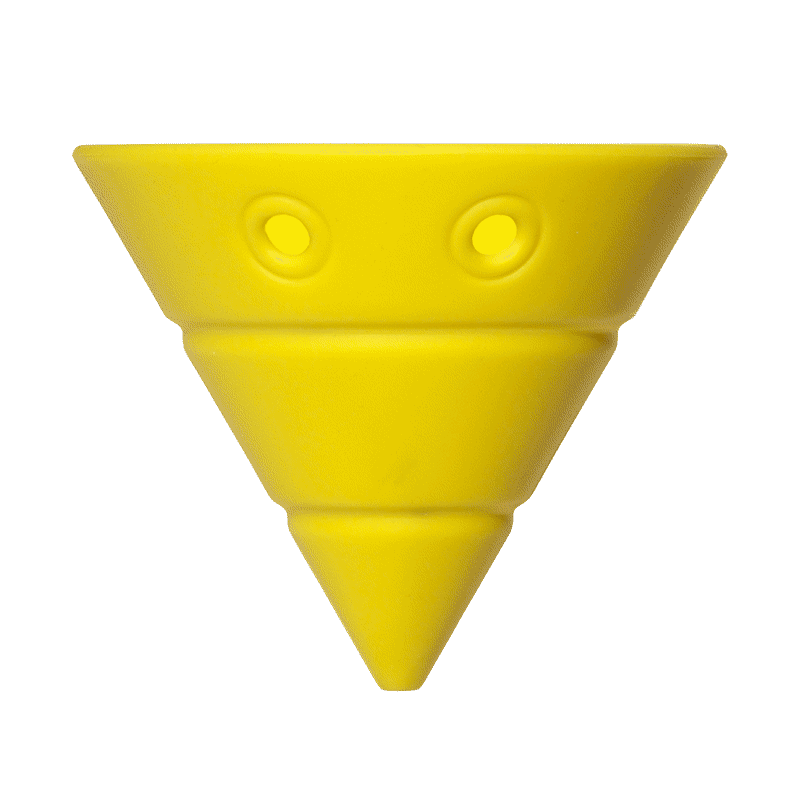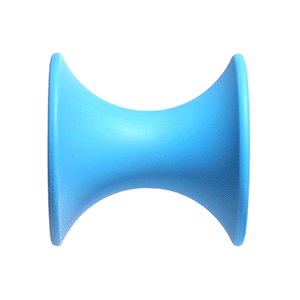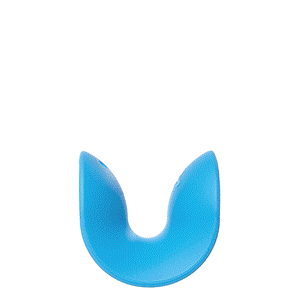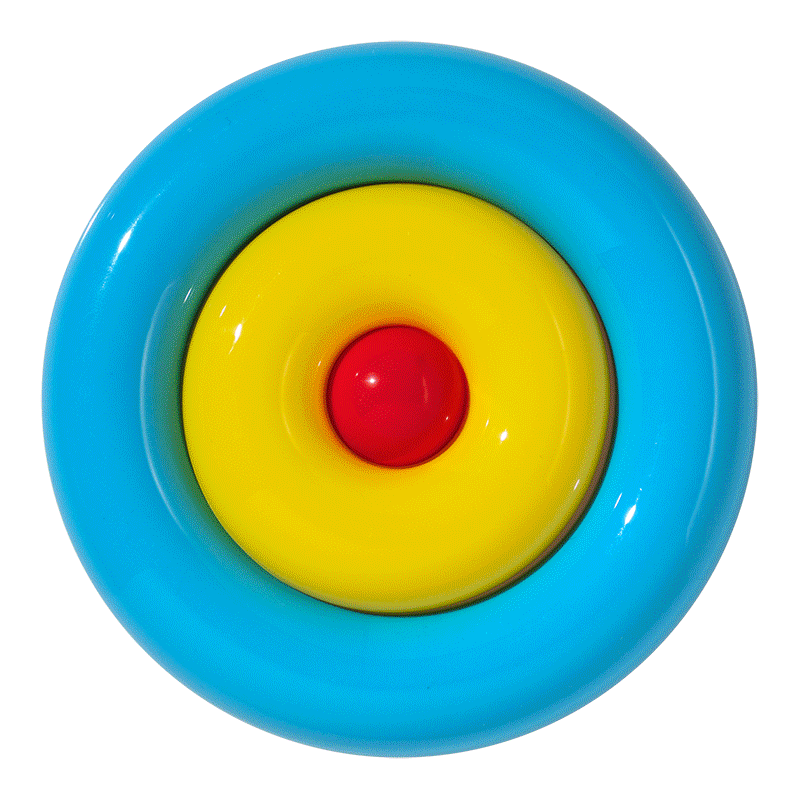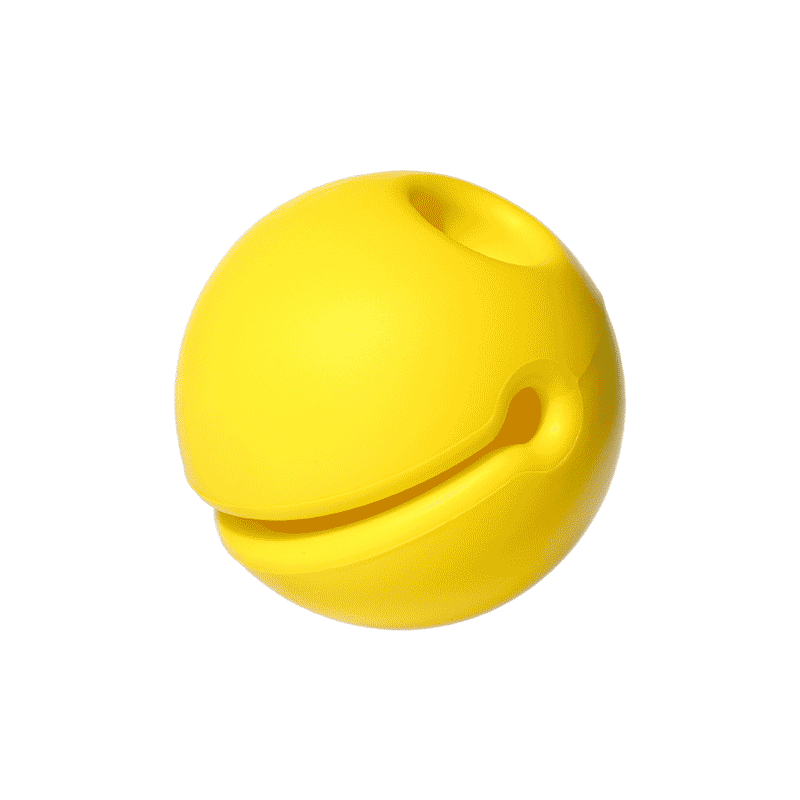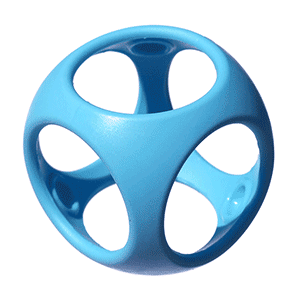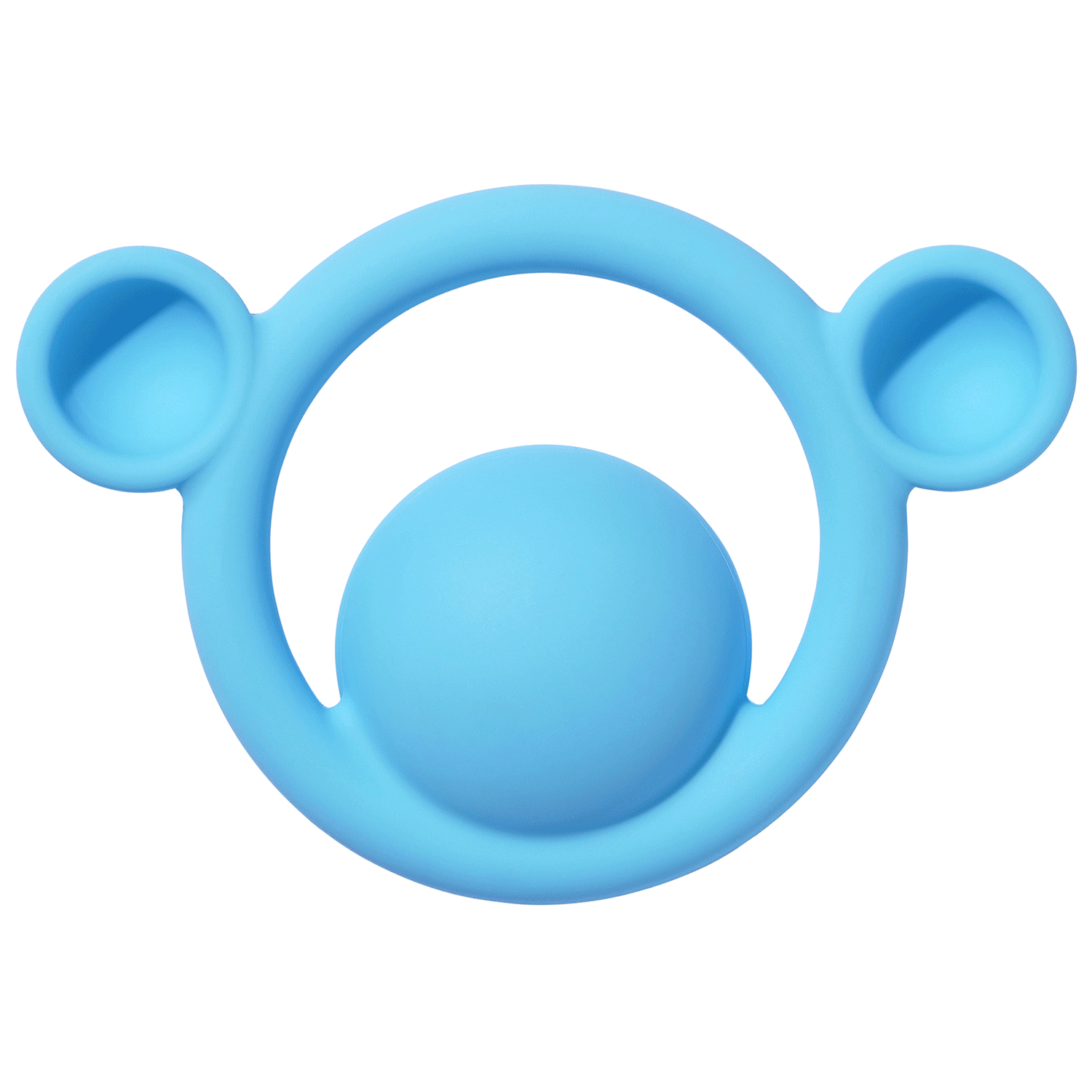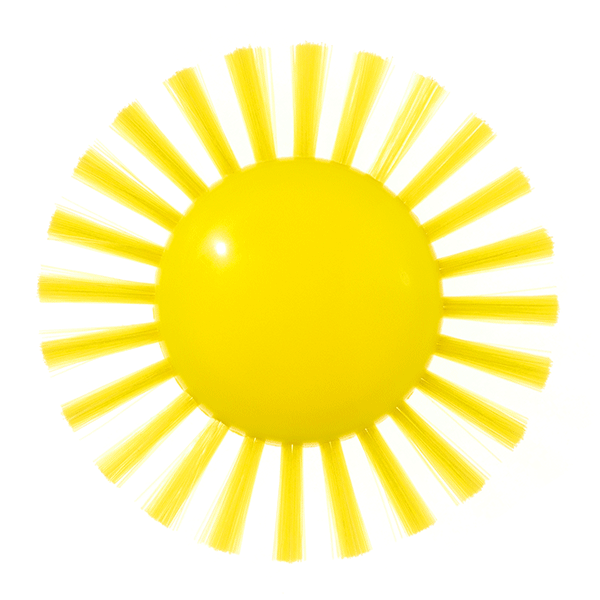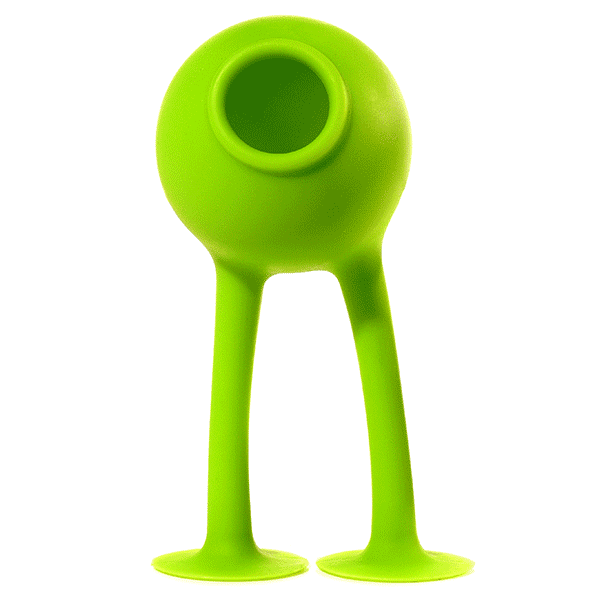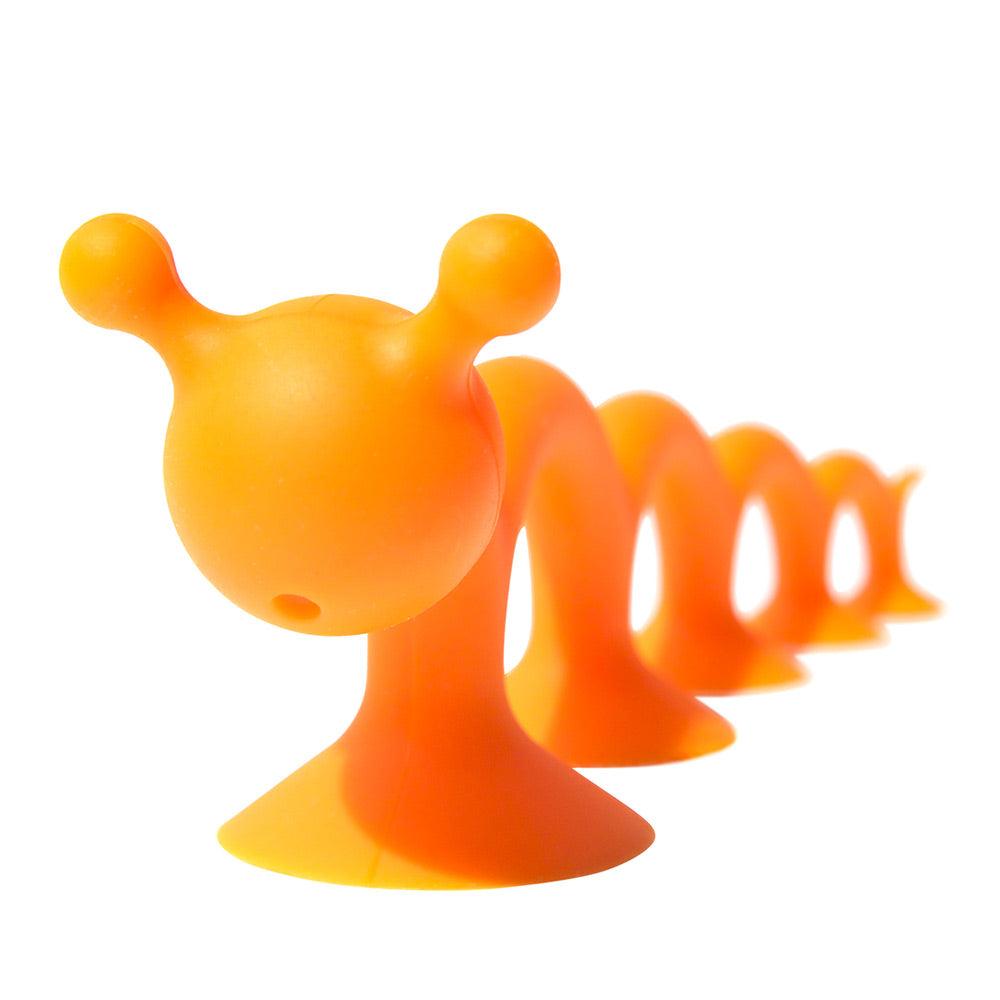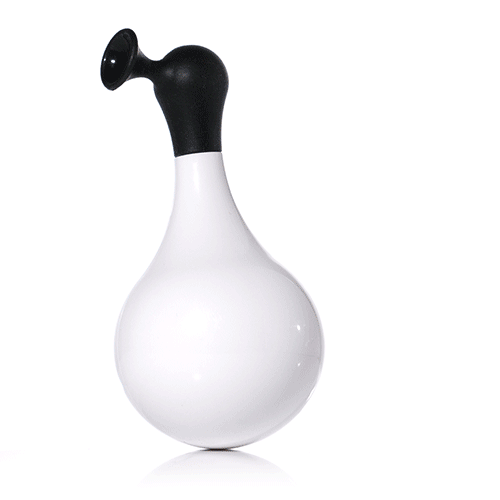FAQ
Understanding MOLUK & Open-Ended Play
Open-ended play means the toy doesn't tell the child what to do – the child decides.
A toy fire truck is always a fire truck. But Bilibo? It's a boat, then a drum, then a turtle shell, then a hiding spot. The story isn't preprogrammed into the toy – it's created by the child's imagination and movement.
Research in neuroscience and child development shows that this kind of self-directed play builds the foundation for lifelong learning. It strengthens coordination, balance, and spatial awareness while nurturing creativity, empathy, and flexible thinking.
In a world full of screens and structured activities, open-ended play gives children something rare – the freedom to explore, experiment, and trust their own ideas. That's what MOLUK is all about: creating toys that fuel confidence, curiosity, and a genuine love of learning.
All MOLUK toys are designed for free play – they don't tell children how to play, but invite them to invent their own games. Each toy grows with the child, offering new challenges and possibilities across different ages, and all MOLUK toys work together like pieces of one big organic puzzle. This open-ended approach builds creativity, problem-solving, and confidence in ways that single-purpose toys simply can't.
Here's what surprises every skeptical parent: children never ask this question. They just play.
Hand a child a Bilibo and they instantly sit, spin, rock, or balance on it. Give them an Oogi and they'll discover how it sticks to windows, stretches, and connects to other Oogis. Oibo gets squeezed, rolled, stacked, and chewed; Mox becomes a puppet with a big mouth, then a rattle, then a ball.
What seems vague to adults feels unlimited to children. A Bilibo shifts from turtle shell to drum to treasure bucket. That freedom to transform keeps kids engaged for years instead of days.
We adults are conditioned to look for a clear purpose: this toy teaches colors, that one makes sounds. But children don't need instructions – they need possibilities. MOLUK toys invite them to move, invent, and explore on their own terms.
So what do they DO with them? Everything. They play, they imagine, they surprise you – and that's exactly the point.
Absolutely – and often more deeply than screens do. While digital toys offer passive entertainment, MOLUK toys come alive through active participation. Children move their bodies, solve problems, and create stories. The satisfaction of spinning in a Bilibo, or discovering how you can control the rain with Pluï using just your fingertip, activates reward centers in the brain that build intrinsic motivation. Many parents report that our toys become the ones their children return to again and again, precisely because they never "run out" of possibilities.
Educational & Developmental Benefits
Everything – and nothing you could put on a flashcard. MOLUK toys build: gross motor skills (balance, coordination), fine motor skills (grasping, manipulating), spatial reasoning (stacking, nesting), cause-and-effect understanding (controlling the water flow), symbolic thinking (shell = turtle), social skills (turn-taking, collaborative play), language (storytelling, negotiation), and executive function (planning, problem-solving). But here's the key: children develop these skills while having fun, not while being taught. The learning is invisible, intrinsic, and joyful.
The deepest learning in early childhood isn't about memorizing facts – it's about building neural pathways through sensory-motor experience. When a child figures out how to balance on Bilibo, they're developing vestibular awareness, core strength, and risk assessment. When they transform Oogi into a character in their story, they're practicing abstract thinking and narrative structure. These foundational cognitive skills are what enable academic learning later. Think of MOLUK toys as the infrastructure; ABCs and math come naturally once the brain is well-developed and curious.
No – and we'd encourage you not to! Children are natural explorers. The first time they encounter a Bilibo or Oogi, they'll touch, move, test, and experiment without any prompting. Your role is simply to provide the toy, step back, and watch. If your child seems hesitant (which is rare), you might model curiosity: "I wonder what happens if..." But avoid directing: "This is for sitting" or "Make it into a boat." The discovery process is where the learning lives.
Safety & Materials
Your child's safety is our absolute priority. All MOLUK toys are made from high-quality, food-grade materials: HD-PE (like milk bottles), ABS (same as LEGO bricks), or silicone rubber. No BPA, no PVC, no phthalates, no latex, no lead – nothing you wouldn't want your child putting in their mouth. Our toys are regularly tested by independent laboratories and exceed both European and US safety standards.
Here's what many parents don't realize: for toys used in water, sand, snow, or shared play spaces, the right plastic is often the safest and most sustainable choice. Wood can splinter, harbor bacteria in cracks, and degrade when wet. Fabric absorbs moisture and is difficult to fully sanitize. Our recyclable plastics and silicone are non-porous, dishwasher-safe, and built to last – which means one MOLUK toy replaces many disposable alternatives over its lifetime.
We love wooden toys – they're beautiful and timeless. But toys made from wood (and fabric) have limits, especially for outdoor, water, or shared play. They absorb moisture, splinter, and can harbor bacteria.
MOLUK toys are made from carefully chosen, fully recyclable plastics and silicone – materials valued for their strength, safety, and longevity. Bilibo, for example, can endure years of sand, snow, and water play without cracking or warping. Nigi Nagi Nogi and our other silicone toys can be washed in the dishwasher or even sterilized in boiling water – making them far more hygienic for teething babies and in nurseries, schools, and therapy settings.
Most importantly, a toy's sustainability depends on how long it lasts and how much play value it gives back. One Bilibo often entertains a child for a decade, then gets passed on to siblings, friends, or the next generation. That long lifespan means fewer resources used overall and fewer toys ending up in landfills.
Plastic isn't the enemy – waste is. When used thoughtfully, it's often the most responsible choice for safe, hygienic, and sustainable play. MOLUK toys don't replace wooden toys – they complement them, expanding the ways children can play.
Effortlessly. Most MOLUK toys are cast in one seamless piece and can be rinsed with soap and water, wiped down, or even put in the dishwasher (check individual product guidelines). There are no electronic components, crevices, or painted surfaces to worry about. Bath toys like the Pluï Rain Cloud are designed to open completely for thorough cleaning and drying – preventing the mold buildup that plagues conventional bath toys. (The New York Times' Wirecutter even featured 4 MOLUK toys in its Best Bath Toys guide.) This ease of maintenance makes our toys ideal for shared play spaces, multiple children, or families concerned about hygiene.
Value & Longevity
We believe they are – here's why: Unlike toys designed for a specific age or skill level, MOLUK toys grow with your child. A one-year-old mouths and grasps Oibo; a three-year-old stacks it; a six-year-old builds complex structures. Bilibo has been played with by toddlers, school-age children, and even teenagers.
When you calculate cost-per-year-of-play (often 5-10+ years), the developmental benefits, and sibling hand-me-down value, the math makes sense. Our toys are built to last – we've heard from families whose Bilibos and Plui Clouds have survived a decade of play and still look nearly new.
Bilibo sits in museum collections and was featured at MoMA – a critic once called it "baby's first piece of modern art." We like that – except this art is meant to be sat on, spun in, and jumped across without apology.
The opposite, actually. Because there's no "right way" to play, MOLUK toys reveal new possibilities as children develop. A two-year-old spins in Bilibo; a four-year-old uses it as a boat in imaginary play; a seven-year-old creates obstacle courses with friends. We've received letters from teenagers who still keep their childhood Bilibo in their room – not as a toy anymore, but as a beloved object that holds memories. Open-ended toys don't get outgrown; they get reimagined.
Yes! And we encourage that too. MOLUK toys exist in the same spirit as cardboard boxes and natural materials – they're open-ended, imagination-fueled tools. The difference? Durability, safety, thoughtful design, and sensory richness. A cardboard box is wonderful until it tears or gets soggy; Bilibo works in water, snow, sand, and indoors for years. We've refined every curve, weight distribution, and texture to maximize developmental benefits while maintaining that same magical "what if?" quality of the best found objects.
Special Needs & Inclusivity
Many therapists, special education teachers, and parents report that MOLUK toys are particularly beneficial for neurodivergent children. Here's why:
Sensory regulation:
Rocking, spinning, and proprioceptive input (like balancing on Bilibo) can be calming and organizing for children who seek sensory feedback.
No overwhelming stimuli:
Unlike flashy electronic toys, MOLUK toys don't have sudden sounds or lights that might trigger sensory overload. And for children sensitive to visual stimulation, we offer most toys in both vibrant primary colors and softer pastel shades.
Predictable yet flexible:
The toys are simple and consistent in form, but open-ended in use – allowing children to engage at their own pace and comfort level.
Non-verbal expression:
For children who struggle with language, toys like Oogi become tools for communication and storytelling.
Yes – and occupational therapists often incorporate them into therapy. Bilibo's curved shape supports children who are working on core strength, balance, or vestibular processing. Toys like Oibo are easy to grasp for children with limited hand mobility. The adaptability of open-ended play means that a child can engage with the toy in whatever way their body allows, without "failing" at a prescribed task.
Practical Considerations
MOLUK toys are designed to be multifunctional, so they "earn their keep" in small homes. Multiple Bilibos stack neatly when not in use and can double as storage for smaller toys or art supplies. Silicone toys like Oibo, Mox, and Hix are compact and can be tucked into baskets or drawers. MOLUK toys don't collect dust in a corner the way so many toys do – they're used daily because they're versatile and keep revealing new possibilities.
Many minimalist families choose MOLUK precisely because one toy replaces many: Bilibo is a seat, a bucket, a drum, a balance board. Why own ten single-purpose items when one does it all?
Beautifully. MOLUK's philosophy aligns closely with these educational frameworks:
Montessori:
Self-directed exploration, real-world materials, respect for the child's autonomy
Waldorf:
Imagination-driven play, natural forms, minimal prescriptive structure
RIE:
Allowing infants and toddlers to be active participants, trusting their competence, providing safe spaces for exploration
Many Montessori schools and Waldorf programs include MOLUK toys in their environments because they support intrinsic learning without adult interference.
About MOLUK
Two siblings: Alex and Doris Hochstrasser. We founded MOLUK in 2011 in Zurich, Switzerland, and we still run everything ourselves.
Alex – an industrial designer with over 25 years of experience developing toys and a big child at heart – designs every MOLUK toy, along with all our packaging, graphics, photos, and videos. Doris, an architect, handles logistics, compliance, and finances. Together, we work closely with educators, therapists, and most importantly, children, to refine each design until it feels right.
Of course, we couldn't bring these toys to families around the world on our own. We've built relationships with manufacturing partners who care as much about quality and safety as we do, and distributors who share our belief that children deserve meaningful toys that last. Everyone in our circle is here because they genuinely care – and you can feel that in our toys.
We're small, independent, and driven by the belief that play is essential – not as a tagline, but as the reason we do this work. When you choose MOLUK, you're supporting a family business that puts children first: their curiosity, their capability, and their right to play on their own terms.
Sustainability isn't a buzzword for us – it's the foundation of every design decision we make.
Longevity is everything.
The most sustainable toy is the one that never gets thrown away. Around 80% of toys worldwide end up in landfills, often within months. MOLUK toys are built to last and designed to grow with children. One well-loved Bilibo, Pluï, or Oogi can outlast dozens of disposable single-purpose gadgets, moldy bath squirters, or trend-driven collectibles that lose their appeal even before their batteries die.
We choose materials thoughtfully.
We use plastics like food-grade HD-PE that are fully recyclable through established systems in most countries. We've tested bioplastics extensively but won't switch until they can truly match our standards for durability, safety, and verified lower environmental impact across their full life cycle – including land use, energy, and end-of-life disposal.
We design without expiration dates.
Most commercial toys are narrowly targeted by age or gender, which means they're destined to be discarded once a child "outgrows" them. MOLUK toys are timeless, multifunctional, and inclusive. They don't go out of style or lose their appeal.
We've eliminated what doesn't belong.
We made a deliberate decision to remove PVC from our production over a decade ago, even though it limited what we could make. You'll also find no composite materials that can't be recycled, no painted finishes, and no trend-based designs. We keep packaging simple and recyclable with minimal plastic, and we work with trusted manufacturing partners to keep transport routes short and direct, minimizing our carbon footprint.
The bottom line: Real sustainability isn't about green slogans – it's about creating objects children treasure, share, and pass down instead of tossing aside.
MOLUK is an invented name — a playful blend of inspirations from mollusks and their beautiful shells, the exotic Molucca Islands, and a hint of “more luck.” Like our toys, it’s unique, universal, and sparks the imagination across languages.
